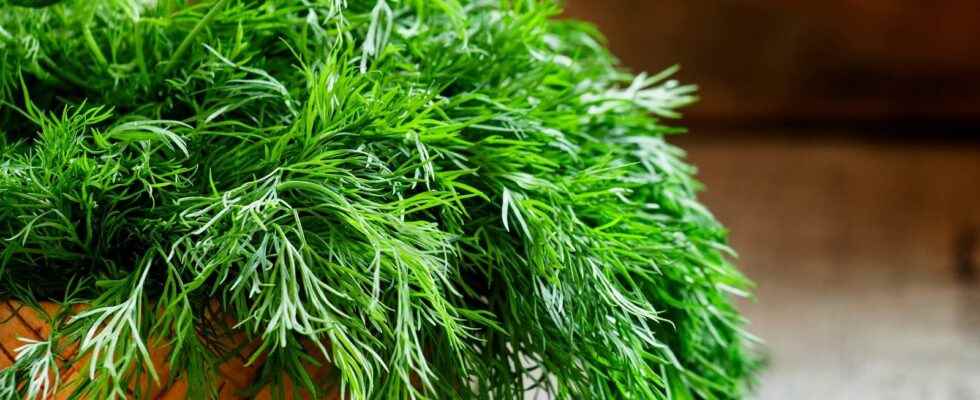With its pronounced taste of anise, dill is a aromatic herb which goes perfectly with a fish or a sauce. Easy to grow, dill requires little care and produces plenty of fine, fragrant, cut leaves. Grow dill for its aesthetic appeal in the garden and aromatic on the plate.
History of dill
Dill (Anethum graveolens), also called fennel bastard or stinking fennel, is one of the essential aromatic plants and of the Apiaceae family (Apiaceae). Not to be confused with the fennel (Foeniculum vulgare) which has larger foliage. Native to Central Asia and Southern Europe, this plant annual was already mentioned in Egyptian manuscripts. In Roman times, dill accompanied the dishes of gladiators to bring them vitality.
Growing and harvesting dill
Dill appreciates the sun and a well worked soil, enriched with compost the previous fall, drained and a light soil. This plant is sown directly in place, in the vegetable garden or in a pot on a balcony, from spring to late summer. In cold regions, you can start sowing dill in March-April, in a warm place, in pots. Bury the seeds only one centimeter and cover them with soil. Practice a thinning in order to keep one foot every 20 centimeters. You can also plant a purchased pot. Prefer to sow it or plant it in the bottom of a bed because its stems can reach more than one meter in height. The stems carry a multitude of small floral umbels of color pale yellow from July to September. Cut them to prevent the flowering from exhausting the foot. Only watering is important when the days are hot and the soil is dry. From June, you can harvest the fragrant leaves as needed, until October. At the end of summer, the flower stalks give way to brown seeds, which are also edible to flavor a dish. Dill can reseed itself in some gardens.
With its pronounced fragrance, dill is also a repellent plant against the aphids and the red spiders. In addition, the very fragrant nectar of dill attracts many insects pollinators, very useful in the garden such as hoverflies and the lacewings.
The virtues of dill
This aromatic herb is widely used for its digestive and stimulating benefits. Its fresh or dry leaves as well as its seeds are appreciated. It is known for its effects diureticsantimicrobials, antioxidants, painkillers and anti-inflammatories. It contains vitamin B9.
You will also be interested
Interested in what you just read?
